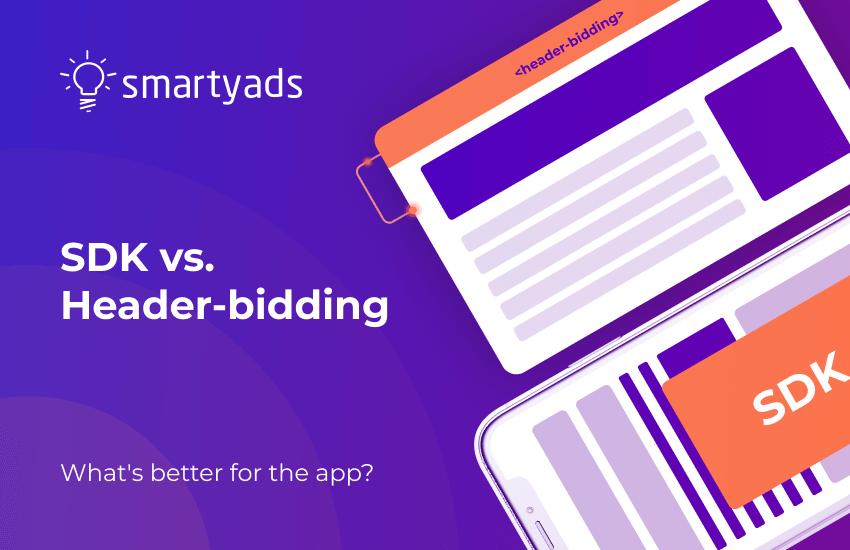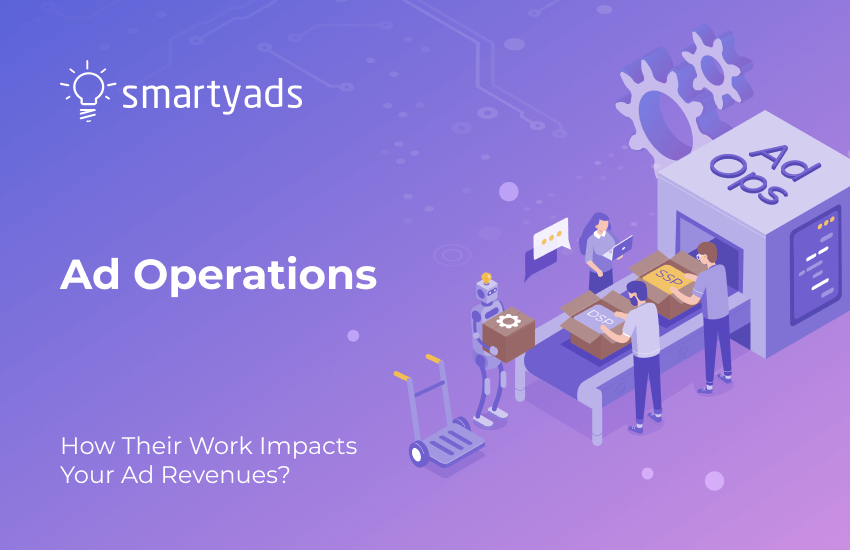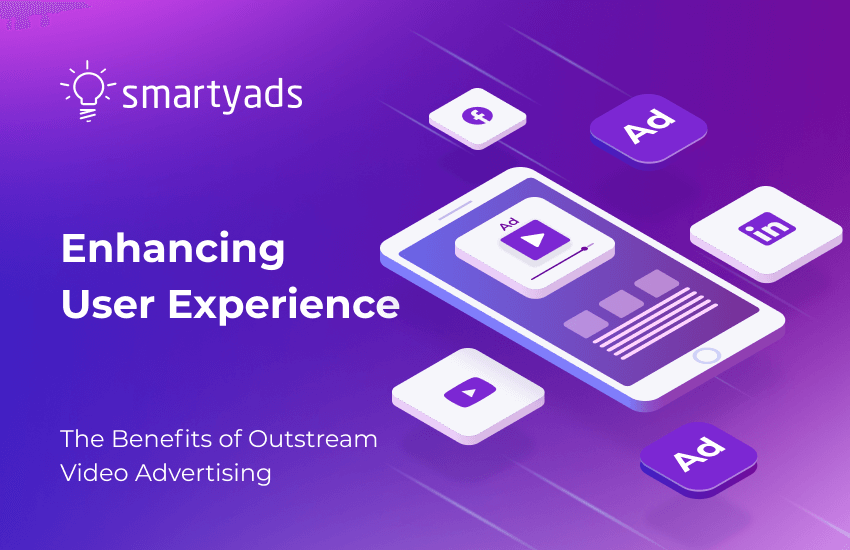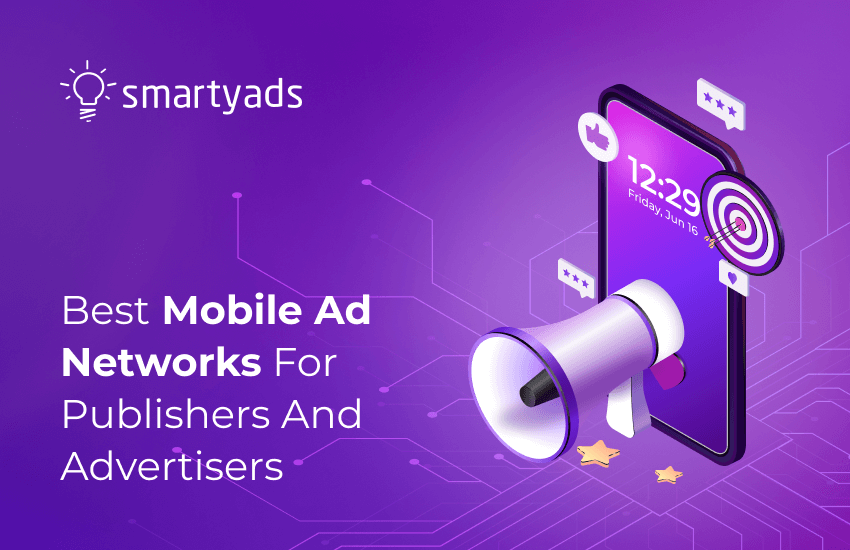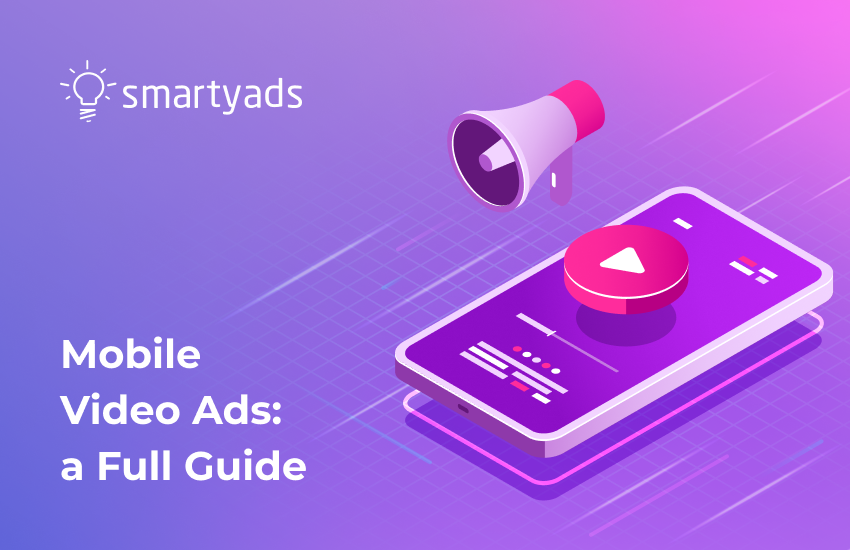In 2019, more and more mobile publishers transition to header-bidding (parallel bidding) - a technology already well established in the desktop environment. Header-bidding allowed website owners to compare the incoming bids from DSPs in mutually beneficial unified auctions.
The mobile app monetization landscape has been arid for a long time in terms of additional revenue streams. Due to the difficulty of implementation, in-app header-bidding fell behind desktop for a couple of years. Today, the massive transformation has finally hit mobile devices. In this regard, the majority of publishers are puzzled with the question: which of the monetization mechanisms works best for mobile web in 2019: SDK integration, in-app header bidding wrappers or mobile app monetization trends related to IAP and interactive advertising.
Mobile app monetization 2019: IAP and advertising
Mobile apps are on the verge of glory: growth in mobile ad sales has reached 30% globally and 29% in the U.S. Meanwhile, growth in apps that monetize via in-app mobile ads has recently climbed to 60%.
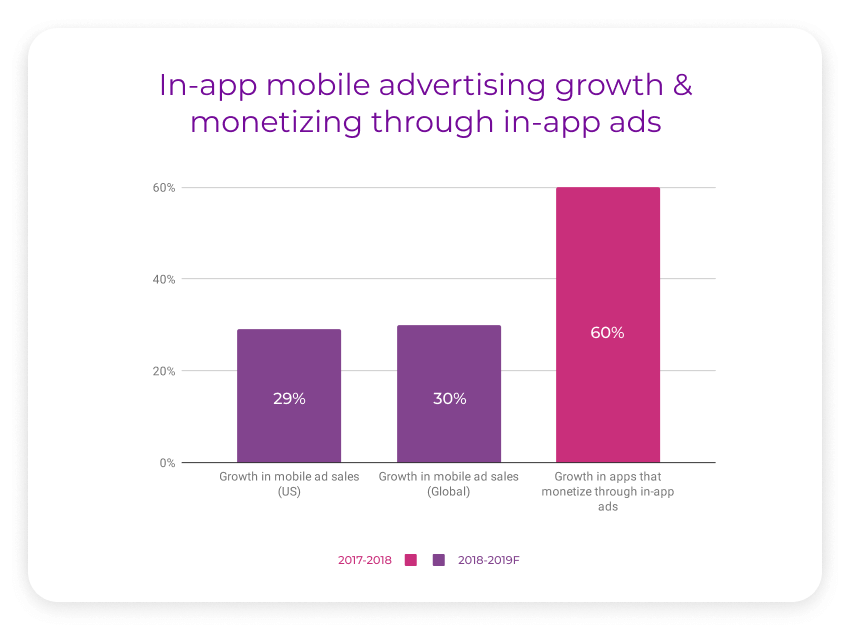
A review of the most profitable apps has shown that mobile games, AR and hypercasual in particular, are remaining to be the leaders in the in-game purchasing segment. Nevertheless, since the number of smartphone users is increasing every year, small apps still have the opportunity to receive their share of revenue stream with programmatic advertising.
The role-playing games and strategies mainly focus on monetization via in-game purchases.
In the apps where engagement and game skills of users can be low, like in the hyper-casual genre, monetized mobile apps typically show advertising. With increasing involvement and skill, mobile advertising can be substituted with in-app purchases.
However, in-app monetization with ads, today is successfully combined with in-app purchases. For the free apps, ad placements appear to be the only source of income that helps to keep the mobile game free for users. For instance, downloading the horror ‘Granny’ game is free on App Store and Play Market, but in the process, it asks to collect the user data to enable the targeted advertising. Same thing with non-gaming apps: Spotify, Facebook or Twitter. In such cases, the monetization model works exceptionally effective.
Interactive advertising campaigns: rewarded and playable
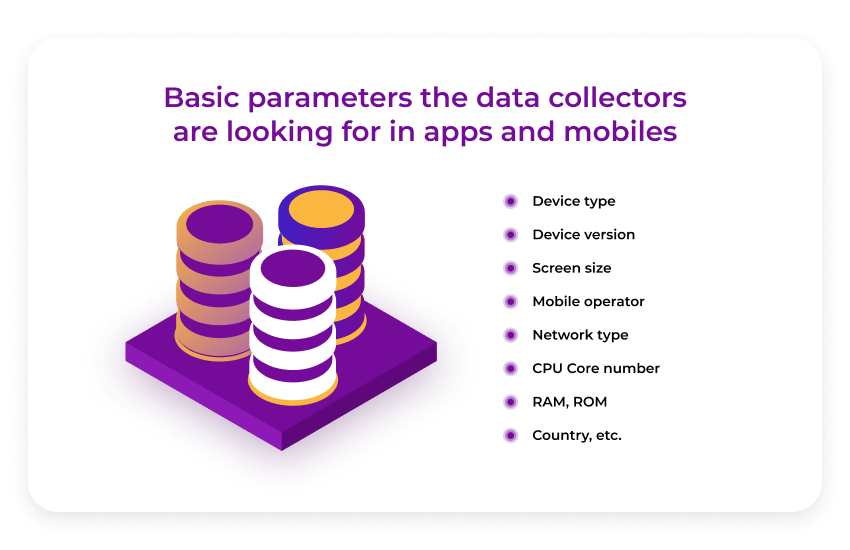
Today app developers integrate mostly interactive ad units since such creatives drive the best user engagement and thus, more in-app and mobile traffic.
The stars of interactive ad formats are, undoubtedly, rewarded and playable video ads. Rewarded video is a commercial that user voluntarily watches in return for a reward: free game bonuses, options or access to exclusive content. This model has been introduced during the last couple of years. App developers who entirely rely on in-game purchases are gradually rethinking their monetization strategies after trying this one. The thing is, playables are not only the best eCPM generators, ($30 compared to $0.15-$2.00 banners), they’re also user-oriented and preferred by 70% of mobile gamers, which enhances user acquisition and LTV.
Playable videos, in their turn, show 8 times better ad unit performance than other ad formats in general. These are the videos that pop up in the middle of the game and feature a demo version of the other game, which users can try before downloading. When the technology is ready, interactive ad formats will also be available on CTV platforms, which will add even more engagement to the immersive big-screen TV experience.
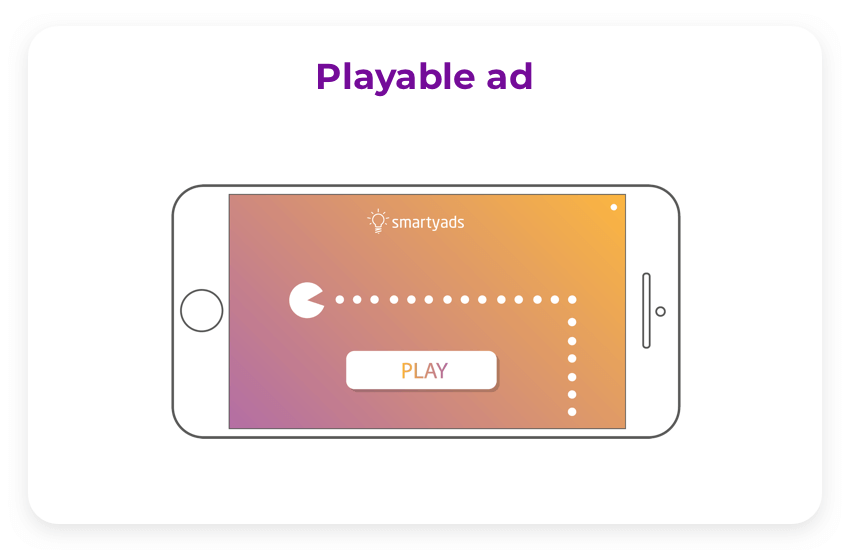
Header-bidding mobile app monetization for publishers
For a long time, publishers run mobile in-app monetization using waterfall. Publishers were sending their requests to third-party platforms which sequentially offered mobile advertising networks to the publishers in return. The first mobile ad network obtained the right to send the bid, and only if it could match the publisher’s floor price the second network could respond to the request. Each subsequent waterfall round decreased the price of inventory.
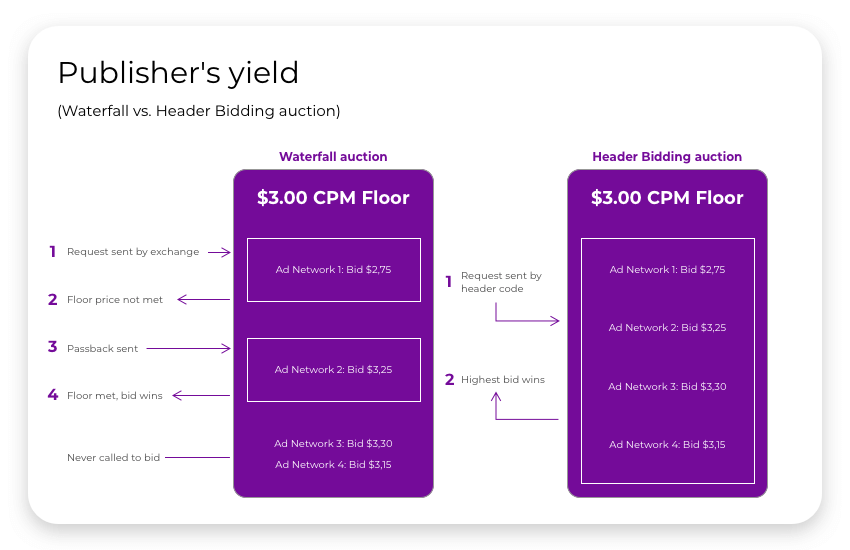
As featured above in the picture, header-bidding effectively resolves these problems, providing advertisers with equal right to get the best inventory quality and saving the publishers from potential profit gaps. As a result, application profitability rises, according to various estimates, by 30–50%.
The unified auction allows DSPs and trading desks, which represent a big share of the demand, to compete for inventory side-by-side with advertising networks. Header-bidding app monetization solution provides developers with an opportunity to report on the price of each impression, and, unlike waterfall, it features no additional commissions or biases in favor of certain demand parties. Now, there’s another good news for advertisers. In March 2019, IAB Tech Lab has also launched ads.txt specification version 1.0.2 designed specifically for in-app and OTT inventory authorization which promises to make mobile programmatic media buying more transparent and safe.
Implementation. Since header-bidding is a string of JavaScript code embedded in the website’s header, the same way it is implemented in mobile websites. As there’s no browser in the application, the app developers install SDKs (software development kits) - a variation of plugins written in the language of app’s OS (IOS or Android) and integrated to perform certain functionality. SDK is responsible for initiating the header bidding and inviting demand partners to the unified auction. Currently, in-app header bidding is supported by Prebid.js, Direct Bidder, and FairBid.
Note: Several SDKs integrated into the single app can slow down the app and increase the likelihood of problems associated with latency. To avoid this, many enterprises implement server-side header bidding, where server to server connections are handling a great deal of the workload so that loading speed in apps significantly increases.
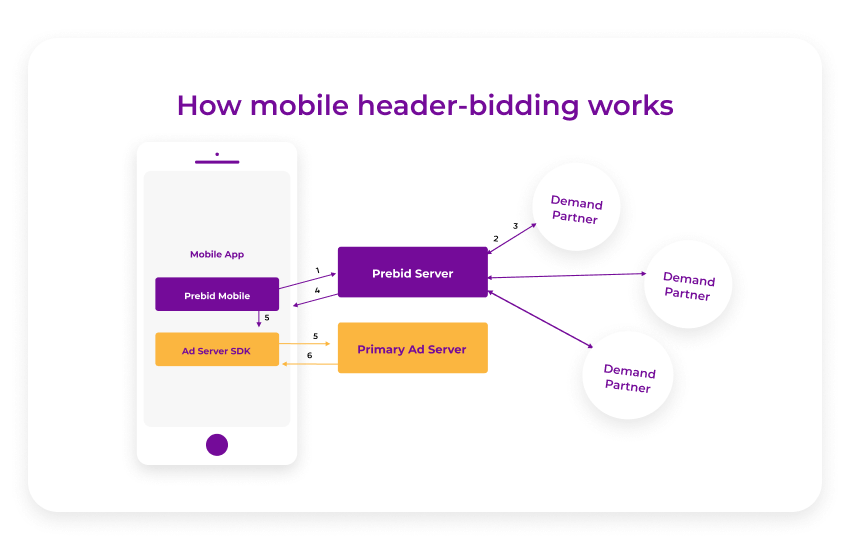
In-app header bidding vs. SDK monetization
In-app mobile web monetization in 2019 will not bring fundamental novelties in the auction mechanisms, apart from bid shading practices or transition to the first-price. The bigger shift will be noticeable in the way header-bidding partners are managed.
The practice proves the following, every app publisher today works with at least 5 different partners. To this day the market has been advocating for SDK mediation solutions. It enables app publishers and developers to manage the networks using a single SDK which acts as a container for others. With several SDKs being grouped, app publishers get all the benefits each SDK partner has to offer, but again, they can be limited to whatever the mediation network supports. Apart from this, more manual work might be needed to configure each network and make it work well for the app.
The header bidding helps to reduce the necessity of SDK implementation since the solution already provides access to a large number of demand partners. The transition from SDK mediation to the header-bidding auction can be implemented via prebid mobile. In this case, all that publisher has to do is install the prebid mobile SDK, that will send the call to the prebid server, which supports server-side auctions. The app’s primary ad server (also must be installed) will receive the creative of the winner. This picture is very similar to mobile app monetization: where barriers for auction entrants go lower so it becomes easier for the participants to join.
Summing up why header-bidding is better than separate SDK integration:
- It helps to accept multiple bids on inventory at the same time which maximizes publisher's income.
- It decreases latency associated with multiple SDK integrations in one app.
- It delivers better transparency regarding incoming bids.
- No need to integrate SDK of each partner into the app.
- Better partner management - with header-bidding wrappers publishers receive more control over their inventory and can manage partners with ease.
- Better compatibility with apps.
The last word
In-app mobile website monetization for publishers is an endless field of opportunities in 2019: starting from interactive mobile ad formats and ending with ultimately profitable app header-bidding auctions. These days many publishers use a combo of all these techniques, such a hybrid approach will affect several valuable user metrics at once, including app profitability, fill rates, and user engagement altogether.
